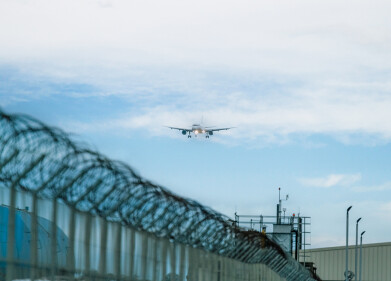Air Clean Up
Where Does Air Pollution Go?
Jan 20 2016
With rising concerns about climate change, we’re all well aware of the importance of reducing our own individual carbon footprint in a bid to avoid a global temperature hike of 2°C, which could be disastrous for small, lower-lying nations around the world. But where does pollution go, once it has been released into the atmosphere?
It may surprise you to know that some forms of pollution can actually be dispersed naturally. A 1999 study by the CSIRO Australia found that the presence of natural compounds called hydroxyl radicals actually work to eliminate the harmful effects of many contaminants.
A Landmark Study
The investigation was the most comprehensive of its kind at the time and took place in north-west Tasmania, just off the coast of Australia. It was conducted throughout the summer months, when the sun’s rays were at their most potent, primarily because it is this solar energy which acts as the catalyst in so many chemical reactions in the atmosphere.
One particular contaminant which is susceptible to both the sun’s rays and hydroxyl radicals is ozone. When you hear the word ozone, you might instantly think of the protective layer above the Earth’s surface which works to filter out many of the harmful ultraviolet (UV) rays of the sun. However, this is only one kind of ozone (stratospheric ozone). Another, manmade variety of the gas exists in the troposphere, much lower in altitude. This is a greenhouse gas (GHG) which in excessive levels, can cause irritation to the eyes, throats and lungs of humans. For more information on the different kinds of ozone, how they are formed and their effects, see the article Should I Be Concerned about Ozone Pollution?
“If levels of hydroxyl radicals are changing, one consequence may be increasing concentrations of ozone gas in the lower atmosphere,” explained Professor Stuart Penkett from the University of East Anglia’s School of Environmental Sciences. “A change in ozone and hydroxyl radical concentrations in the lower atmosphere would certainly affect the stability of the world’s climate.”
As such, this study provided an insight into falling hydroxyl radical levels, their effect on ozone concentration and the subsequent impact on the atmosphere as a whole. But what about other contaminants?
A Deadly Cocktail
Increased industry over the last decades and centuries have led to a dramatic upsurge in the number of harmful emissions that factories, power plants and businesses are spewing into the atmosphere.
Of particular concern is particulate matter 2.5 (PM2.5), small particles with a diameter of less than 2.5mm which can easily be inhaled by humans and animals and then go on to infiltrate our bloodstream. Once this happens, all manner of health complications can develop, from respiratory ailments such as asthma to coronary problems such as strokes and heart disease.
Other harmful pollutants that are found in increasing quantities in today’s air are carbon monoxide, sulphur dioxide and nitrogen oxides, all of which can be very damaging to the human body if it is subjected to prolonged exposure. It is for this reason that conferences and conventions such as the Air Quality and Emissions show (AQE) are continually seeking new and innovative ways to record pollution density in our cities, towns and villages and coming up with ways of curbing and reversing this dangerous process.
Events
Nov 26 2024 Paris, France
Nov 27 2024 Istanbul, Turkey
H2O Accadueo International Water Exhibition
Nov 27 2024 Bari, Italy
Biogas Convention & Trade Fair 2024
Nov 27 2024 Hanover, Germany
Dec 11 2024 Shanghai, China







-as-feedstock.jpg)






